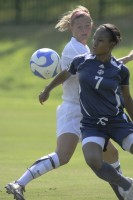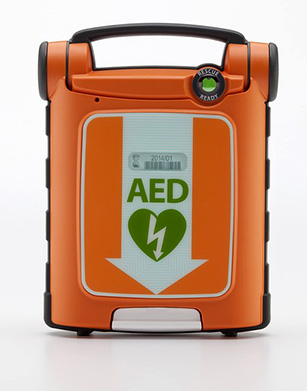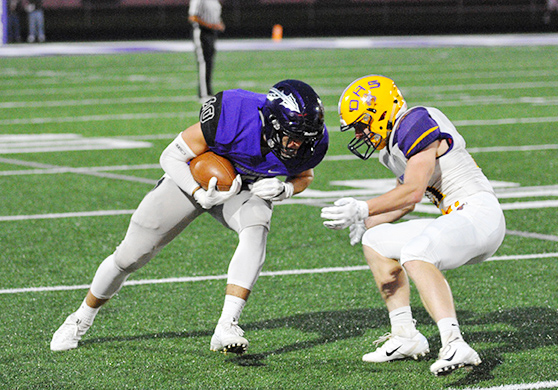SportsMed: Examining ACL injuries in athletes
Athletes in specific sports, as well as females, are at greater risk
 “You have an ACL tear!” These are some of the most feared words an athlete or coach can hear. But when this injury occurs, what does it mean for the athlete and could this injury have been prevented? To address these questions, it is helpful to understand the function of the anterior cruciate ligament (ACL) and how it can be injured.
“You have an ACL tear!” These are some of the most feared words an athlete or coach can hear. But when this injury occurs, what does it mean for the athlete and could this injury have been prevented? To address these questions, it is helpful to understand the function of the anterior cruciate ligament (ACL) and how it can be injured.
The ACL helps prevent forward movement of the tibia in relation to the femur and it works with the other structures (such as ligaments, cartilage and muscles) to help stabilize the knee from dislocating. The ACL is critical for overall stability and for promoting normal mechanics (movement and forces) about the knee.
When the ACL is torn, it is common for the athlete to report that hearing or feeling a “pop,” which is actually the ligament tearing. Simultaneous injury to the knee cartilage, or meniscus, is common, occurring in up to half of all ACL injuries. Injuries to the ACL can occur from either contact or non-contact activities. Approximately 80 percent of sports-related ACL tears are “non-contact” injuries, meaning that the injury did not involve a collision with another athlete.
Non-Contact Mechanisms For ACL Injury
There are three common non-contact mechanisms for an ACL injury.
1. Sudden planting or cutting. One of the most common, non-contact mechanisms takes place during a sudden planting and cutting maneuver. The athlete’s foot is planted firmly on the ground, while the leg and body suddenly turn above the stationary foot. This mechanism is frequently observed in sports such as football, baseball, and soccer.
2. Hyperextension. Another ACL non-contact injury mechanism involves forced-knee hyperextension, which is common in basketball and gymnastics. The knee is extended beyond the normal straightened position, forcing the lower leg excessively forward in relation to the upper leg. An athlete who exhibits knee hyperextension in a normal standing position is especially prone to this injury mechanism.
3. Slowing down & pivoting. A sports maneuver that requires sudden deceleration and pivoting represents another non-contact mechanism for ACL injury. As the athlete slows down and pivots to make a quick change in direction, excessive rotation may occur at the knee. Although this maneuver is most common in soccer, football and basketball, all athletes are at risk for this type of injury.
The most common mechanism for a contact-type ACL injury involves the application of force to the outside of the knee while the foot is firmly planted on the ground, which is common in football and rugby. This mechanism can produce a combination of damaged knee structures, which is called the “Unhappy Triad”: the ACL; the medial collateral ligament (MCL); and a meniscus (medial or lateral). The MCL is superficial, located on the medial (inner side) of the knee (connecting the femur and tibia). Recovery from a triad injury requires a substantially longer period of time than an isolated ACL tear.
ACL Injuries In Females
Female athletes experience four to six times more non-contact ACL injuries than male athletes. There are many theories for this greater susceptibility, including differences in anatomy and neuromuscular coordination.
Females have wider hips, greater flexibility and more inward femur (thigh bone) rotation than males. This inward rotation creates a valgus knee alignment (knock-knees), which is accentuated by weak hip and thigh muscles. The quadriceps muscles produce knee extension by pulling the tibia (shin bone) forward, thus pulling on the ACL. In contrast, the hamstring muscles reduce stress on the ACL by pulling the tibia backward. Poor coordination of thigh-musculature-activation patterns results in greater stress on the ACL, thus making it more susceptible to injury.
Gender-specific anatomic differences create biomechanical differences during the performance of sport-specific movements. Females perform some athletic maneuvers in a manner that may predispose them to ACL injury. In general, females demonstrate greater knee valgus (knock-knee) and less knee flexion than males during cutting and landing. A more upright position reduces a female’s ability to effectively absorb ground reaction forces.
Males tend to recruit the hamstrings first during cutting and landing, thereby placing less stress on the ACL (the hamstrings pull the tibia backward). Because females tend to have less hamstring activation, greater stress is placed on the ACL. Understanding ACL injury mechanisms and the gender differences is essential for development of an ACL injury prevention program.
ACL Injury Prevention
ACL injury prevention programs incorporate stretching, weight training, and plyometric exercises. Although many different programs have been promoted, few of them have been scientifically evaluated. The Cincinnati Sportsmetrics™ program has demonstrated exceptional results.
Sportsmetrics™ is a well-known program that has helped to prevent non-contact ACL injuries and improve sports performance. This program, which was developed by an orthopedic surgeon (Dr. Frank Noyes), athletic trainers, physical therapists and researchers at the Cincinnati SportsMedicine Research and Education Foundation and The Noyes Knee Institute, has been the subject of news reports in the media (including the New York Times and ESPN “Wide World of Sports”). This six-week jump-training program has shown to be effective for both male and female athletes, particularly for those participating in high-risk sports.
Specifically, it involves a series of jumping drills to improve lower-extremity strength, coordination and landing mechanics. Athletes learn to safely accelerate and decelerate during pivoting and landing maneuvers. The adaptations develop through a safe progression from jumping drills to a rapid change of direction for improved knee stabilization.
There are excellent online and published resources available that provide detailed information about ACL injury prevention. A trained professional should supervise programs including jump training.
An ACL tear can sideline an athlete for six to 12 months and it can have physical and emotional impact. The impact on a team, friends, and family, can also be substantial. These factors, along with the high incidence and associated medical costs, further emphasize the need for prevention. Understanding anatomic and neuromuscular coordination risk factors and addressing the modifiable risk factors through an ACL prevention program should be a high priority for trainers and coaches of high-risk athletes.
Gary Wilkerson, edD, ATC; Marisa Colston, PhD, ATC; and Todd Bullard, MS, ATC, from the Department of Health & Human Performance at the University of Tennessee Chattanooga, write, solicit and edit content for the Sports Medicine Spotlight in every print issue of Coach & Athletic Director.





